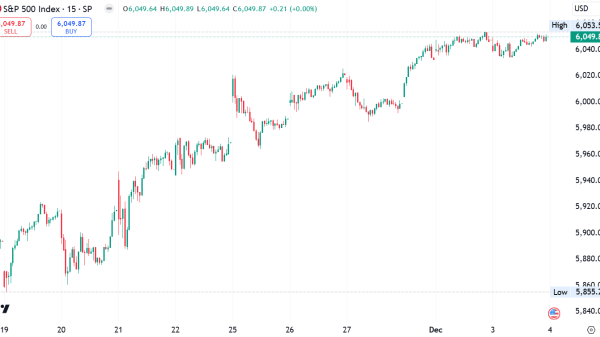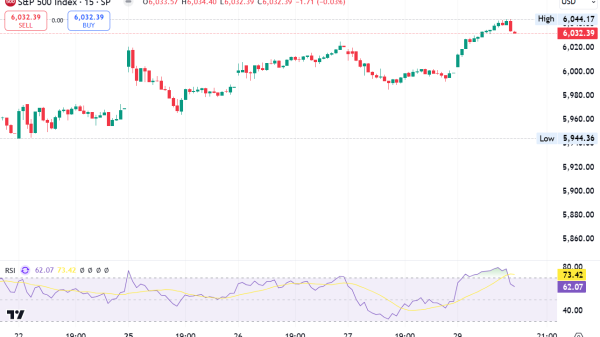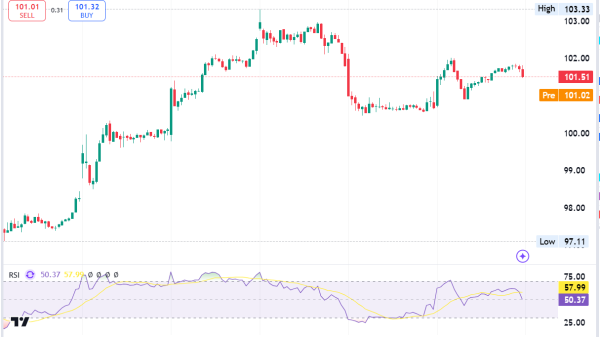Energy Trading Strategies: Navigating Volatile Markets
Energy trading, involving a diverse range of commodities such as crude oil, natural gas, electricity, and renewable energy certificates (RECs), is an intricate and dynamic sector. It demands profound insights into market fundamentals, adeptness in technical analysis, as well as strategic insight to optimize profits.
This field is navigated successfully through an assortment of strategies, from elementary risk management techniques to advanced financial tools, each designed to tackle the inherent volatility of energy markets. This detailed exposition will delve into the prevalent strategies employed within energy trading to boost profitability.
Strategies for market analysis
The cornerstone of energy trading strategies is fundamental analysis. This approach entails a comprehensive review of the supply and demand dynamics that drive energy prices. Traders scrutinize various data points, including geopolitical developments, economic trends, technological breakthroughs, and climatic conditions, to forecast market directions.
An example of this would be the anticipation of price surges due to a looming hurricane threatening oil production in a crucial area. Such an in-depth understanding of fundamental factors equips traders to make well-informed decisions and leverage market movements for gain.
Identifying short-term trading prospects and discerning market directions are imperative, and this is where technical analysis comes into play. Utilizing a suite of charting tools and metrics such as moving averages, Bollinger bands, and the Relative Strength Index (RSI), this strategy allows for the meticulous examination of price actions and trading volumes.
Recognizing recurring patterns and signals enables traders to predict future price movements, facilitating prompt and profitable transactions. Day traders and those in pursuit of immediate speculative profits particularly favour this method.
How to handle risk
Hedging stands as a principal strategy for managing risk, designed to insulate against unfavourable price shifts. By adopting counter positions in related assets, traders can mitigate potential losses.
For example, electricity producers may enter into futures contracts for natural gas, their main fuel, to hedge against potential price increases. Airlines also frequently hedge against fuel price fluctuations to maintain budget stability. Effective hedging is vital for ensuring predictable financial outcomes and for sustaining profitability over time.
The principle of portfolio diversification involves spreading investments across a range of energy commodities, financial instruments, or geographic areas to reduce risk. Avoiding concentration in a single area diminishes the effect of any single underperforming asset.
Diversification strategies can include trading in both oil and natural gas markets, investing in RECs, or participating in various energy-related financial instruments like options and futures, thereby providing a safety net against market volatility.
Arbitrage and speed trading
Arbitrage capitalizes on the price differences of identical commodities across various markets or in different forms. This strategy allows traders to profit from the margin between markets with minimal risk.
An instance would be purchasing natural gas at a lower price in one region and selling it at a higher price elsewhere, leveraging the price gap post accounting for transport and transaction costs. Success in arbitrage necessitates a deep understanding of market dynamics and logistical nuances.
Spread trading executes concurrent but opposite transactions on two interconnected securities. Traders may opt for calendar spreads, buying and selling futures contracts of the same commodity for different delivery months, aiming to benefit from the evolving price difference over time.
This strategy offers a way to profit from market anomalies or inefficiencies without having to predict the overall market direction.
Algorithmic and high-frequency trading (HFT)
Algorithmic trading involves the use of sophisticated algorithms to automate trading decisions based on specific criteria like price, volume, or timing, executing trades at speeds and frequencies unattainable by humans.
High-frequency trading, a specialized form of algorithmic trading, seeks out fleeting market opportunities. These strategies enhance profitability by exploiting minor price variances or market inefficiencies instantaneously.
Through the application of these diverse strategies, traders in the energy market can navigate the complexities and volatilities inherent to this sector, positioning themselves to capitalize on opportunities for profitability.
Innovative strategies
As more people and businesses want green energy, the REC market is booming. RECs prove that electricity came from a renewable source. Trading these certificates helps companies meet green goals or laws, often creating chances to make money. Knowing how REC supply and demand works in different places can lead to profitable trades.
Demand response and grid balancing
This strategy is about using less power or shifting use to non-peak times, in response to the grid’s needs. It helps keep the energy system stable and efficient, especially when demand is high. Traders can join programs that offer money for reducing power use at certain times, opening up a new way to earn.
Investing in energy stocks: A beginner’s guide
The energy sector offers a mix of old and new investment opportunities, from traditional oil giants to cutting-edge renewable energy startups. This diversity provides unique chances and challenges, influenced by global demand, politics, technological progress, and the shift toward renewable energy.
Understanding the energy sector
The energy sector includes companies that find, get, refine, and sell energy, plus those working on renewable energy like solar and wind. Traditional firms focus on oil, gas, and coal, while newer ones might work on renewable sources. The sector’s success is linked to energy prices, laws, and tech innovations.
Opportunities in traditional energy stocks
Investing in big, traditional energy companies can be appealing, especially when the economy is growing and energy use is up. These stocks often pay good dividends. But, investors should watch out for the ups and downs of oil prices, which can be affected by global events, supply issues, and policy changes. Choosing well-managed companies that are also exploring clean energy can reduce these risks.
The rise of renewable energy stocks
Stocks in renewable energy are becoming more popular due to environmental concerns, government support, and cheaper technology. Investing in solar, wind, battery tech, or electric vehicles offers growth potential as the world leans toward sustainability. These stocks might be more volatile and sensitive to policy or tech shifts, so it is important to pick solid companies with clear plans for growth.
Renewable energy stands as a pivotal element in addressing some of the most pressing challenges of our time, including climate change, energy security, and the global need for sustainable development.
As opposed to fossil fuels, which contribute significantly to greenhouse gas emissions, renewable energy sources such as solar, wind, hydro, and geothermal provide cleaner alternatives that significantly reduce the environmental footprint.
Renewable energy is key to tackling major challenges like climate change and energy security. It’s a cleaner choice compared to fossil fuels, which are bad for the planet because they release a lot of pollution.
Sources like solar, wind, water, and geothermal energy use nature’s power to produce energy without harming the environment. This helps cut down on pollution, which is crucial for fighting climate change.
Renewable energy also helps countries depend less on energy from other places. By using different kinds of renewable sources, countries can be more self-sufficient, making their energy supply more stable and prices more predictable.
Plus, renewable energy is good for the economy. It creates jobs in setting up, taking care of, and making equipment for renewable energy, helping local communities grow stronger.
As the world needs more energy, it’s important to use sources that don’t hurt the planet. Luckily, renewable energy is getting cheaper and more effective, making it a smarter choice for new power projects.
Diversifying your portfolio
Mixing different types of energy stocks, from traditional to renewable, and spreading investments across various locations and parts of the supply chain, can help manage risk. It is also smart to think about how companies perform on environmental, social, and governance (ESG) issues, which can affect their future success.
Staying informed and strategic
The energy market is always changing, driven by new tech, policies, and consumer trends. Keeping up with reliable information and learning continuously is key to making smart investment choices. Being strategic, considering both short-term trends and long-term industry shifts, and seeking advice from experts can also help shape your investment approach to fit your goals and risk comfort.
In conclusion, making money in energy trading means using a blend of market analysis, careful risk management, and creative strategies. Fundamental and technical analyses help traders understand and predict market movements.
Strategies like hedging and diversification protect against big market swings, while approaches like arbitrage, spread trading, and algorithmic trading take advantage of market quirks to turn a profit.
On top of these, the growing focus on renewable energy and eco-friendly practices opens new doors for making money through REC trading and demand response activities. Success in this field requires flexibility, a deep understanding of market trends, and a willingness to adopt new methods and technologies.
The post Energy Trading Strategies: Navigating Volatile Markets appeared first on FinanceBrokerage.


































